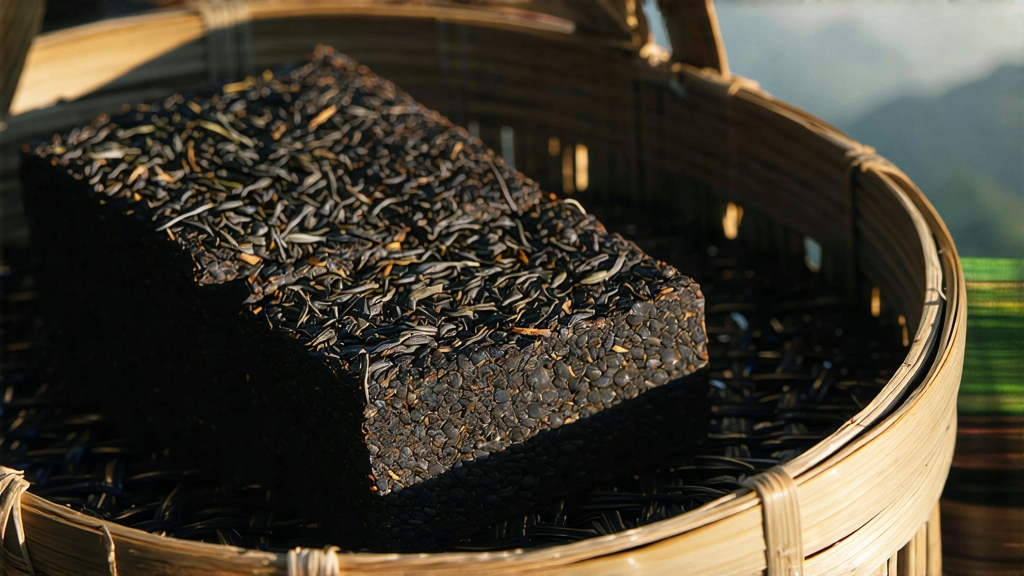
Tucked away in the subtropical hills of Guangxi Province, a tea has been quietly fermenting for more than 1,500 years, absorbing the humidity of monsoon air and the resinous perfume of local pine. International drinkers may speak reverently of Pu-erh, yet few have heard of Liupao—literally “Six Forts”—a dark tea whose very name evokes the military outposts that once guarded the tea horse road leading southward toward the Gulf of Tonkin. Liupao is the only Chinese dark tea that is basket-aged, and its flavor profile—smoky, camphoraceous, faintly sweet like dried longan—carries the imprint of both microbial alchemy and human migration. This article invites you to journey from the Qing-era docks of Wuzhou to the modern gongfu table, tracing how a humble leaf becomes a living archive of Guangxi’s terroir, trade, and taste.
-
Historical footprints in betel-nut mud
Liupao’s origin story begins during the Tang dynasty, when Yao and Han caravans carried coarse tea leaves from the Dayao Mountains to the port of Wuzhou. The 1,800-kilometer voyage to Hong Kong, Macau, and eventually Southeast Asia required tea that could withstand mold and time; locals discovered that packing semi-fermented leaves into woven bamboo cylinders deterred insects and encouraged a slow, even maturation. By the Qing Qianlong period (1736–1795), Liupao had become a tribute item, praised in imperial edicts for “dispelling miasma and aiding digestion” among soldiers stationed in the southern frontier. British records from 1886 list “Lieu-pao” among the commodities transshipped through Hong Kong, valued for its medicinal reputation among Malay miners who chewed it alongside betel nut to ward off dampness deep in the tin shafts. Thus, a tea born of geographic necessity evolved into a trans-cultural tonic, its earthy aroma mingling with areca juice on the breath of laborers who built the ports of empire. -
Varieties: from loose “san cha” to compressed “lao cha tou”
Today Liupao is classified into three commercial styles, each reflecting a different stage of market evolution. Traditional Basket Liupao (竹篓六堡) remains the benchmark: leaves are packed in 30–50 kg bamboo cylinders lined with palm leaves, allowing micro-oxygenation through the weave. Brick Liupao (六堡砖茶), introduced in the 1960s for easier container shipping, presses the same material into 1–2 kg rectangular blocks; the compression accelerates fermentation, yielding a deeper crimson liquor within five years. The most recent innovation, Loose Leaf “san cha” (散茶), caters to urban consumers who lack storage space; it is finished with a lighter wet-pile cycle and sold vacuum-packed for immediate drinking. Among connoisseurs, however, the holy grail is “lao cha tou” (老茶头)—the naturally clumped nuggets that form at the bottom of the pile during wet-piling, their surfaces glazed with golden spores of Eurotium cristatum, the same “golden flower” prized in Hunan Fu brick. These nuggets, once considered waste, now command prices rivaling 30-year Pu-erh for their syrupy texture and lingering coolness on the tongue. -
Craftsmanship: where smoke meets microbe
Liupao production follows the national dark-tea standard GB/T 32719.4-2016, yet every workshop guards proprietary nuances. The journey begins in late April, when farmers pick one bud with the third or fourth leaf from the large-leaf Camellia sinensis var. assamica bushes indigenous to Cangwu and Tengxian counties. After withering under mountain shade, the leaves are pan-fired at 200 °C for eight minutes—longer than green tea but shorter than oolong—arresting oxidation while preserving enzymes crucial for later microbial fermentation. The pivotal step is “dui wo” (wet-piling): the semi-dried leaves are sprayed with mineral-rich spring water, piled 70 cm high, and covered with jute sacks. Inside this 45 °C compost, a succession of bacteria, yeasts, and molds perform a three-week symphony: Aspergillus niger breaks down polyphenols into theabrownins, while